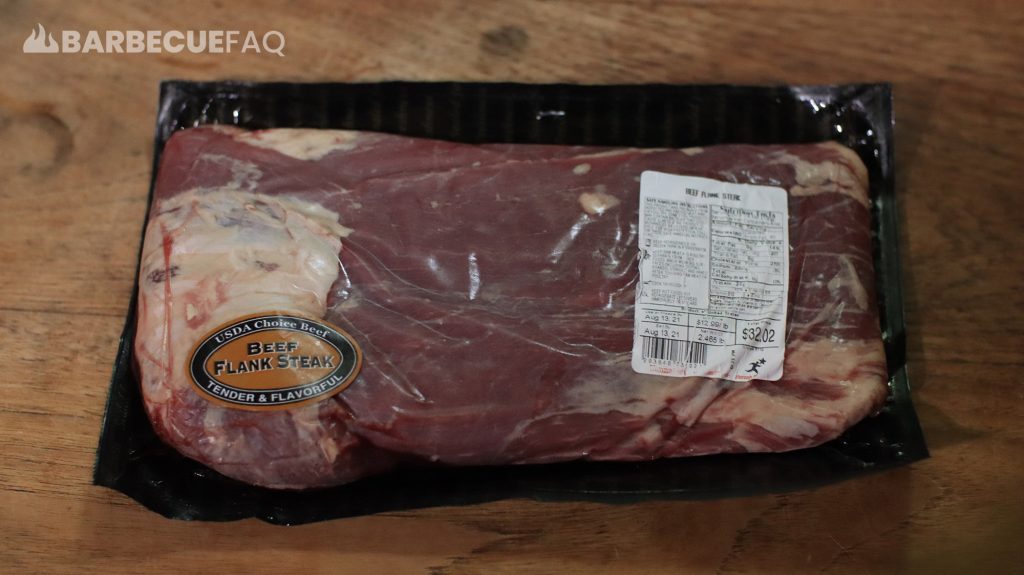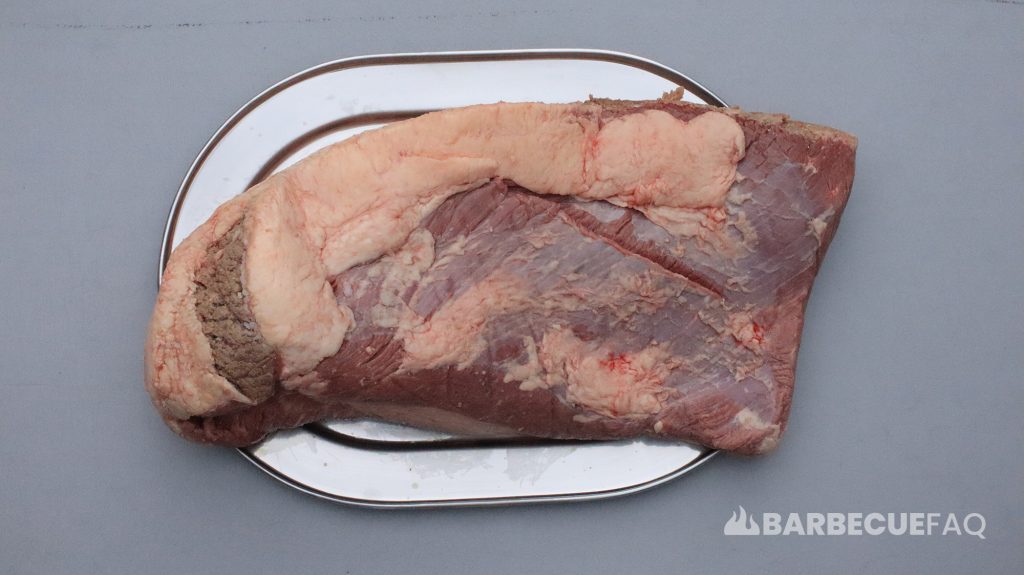A full beef round is found at the hindquarter of the cow – it comprises nearly all the musculature of the rear legs – the thighs, butt, and hams.

The beef hindquarter is separated from the beef rib plate at the 12th/13th rib.
The round is then separated from the loin at the ball and socket joint – where the femur meats the hip bone (aitchbone).
The round is further separated from the hind shank by slicing the achilles tendon and then following the natural seam through the stifle joint (tibio-femoral joint) or what is essentially the knee.
What are the Sub-primal Cuts from the Round Primal?
The main sub-primals that can be extracted from the round are:
Since the hindlegs are heavily exercised, these muscles are lean, lack intramuscular fat, and are rife with connective tissue and collagen.
Most of the muscles don’t make for great steaks, they work well for jerky, and most are turned into some form of roast.
If we look at a cross-section of the hind leg, the 4 major muscles that are present are as pictured:
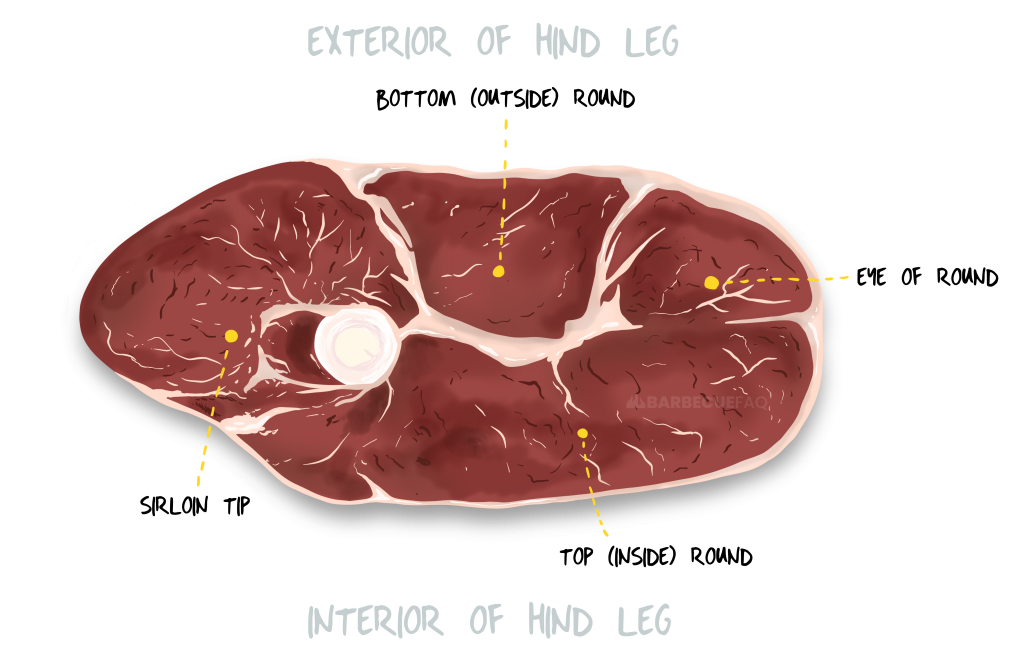
Top Round
The top round is called the “inside” round because it is quite literally found on the inside of the leg – between the hip and knee.

Scientifically, the top round is comprised of 5 muscles: the semitendinosus, the adductor, the gracilis, the pectineus, and the sartorius.
Typically, the “cap” of the top round is removed, which removes three muscles: the gracilis, pectineus, and sartorius; In most cases these muscles are simply ground into hamburger meat.
Leaving us with just the semitendinosus and adductor.
Bottom Round
The bottom round is similarly called the “outside” round because it is found outside of the leg.
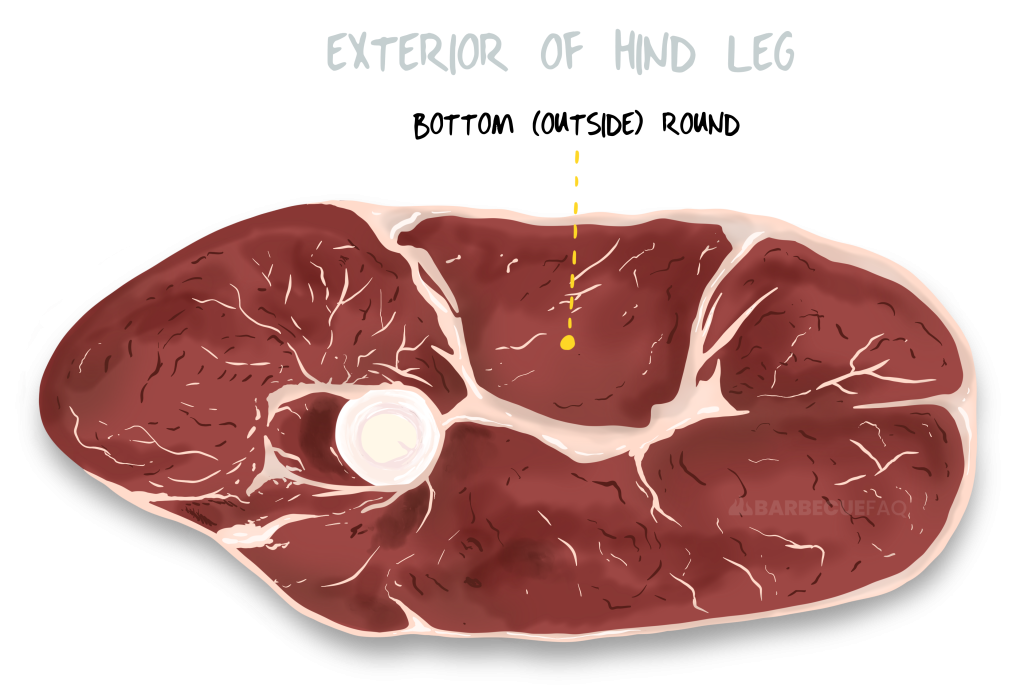
Scientifically, the bottom round is comprised of the entire biceps femoris muscle.
Bottom round does contain some marbling but it’s minimal. The cut is devoid of bones, silverskin, gristle, and cartilage.
Eye of Round
Eye of round is a small cylindrical muscle that comes from the back of the leg and is attached to the bottom round.

Scientifically, the eye of round is the semitendinosus muscle.
Sirloin Tip
The knuckle or “sirloin tip” is the cow’s quadricep muscle (which is actually composed of 4 different muscles).
This muscle is attached to the femur bone and when butchered will typically contain the “knee cap” which is removed.
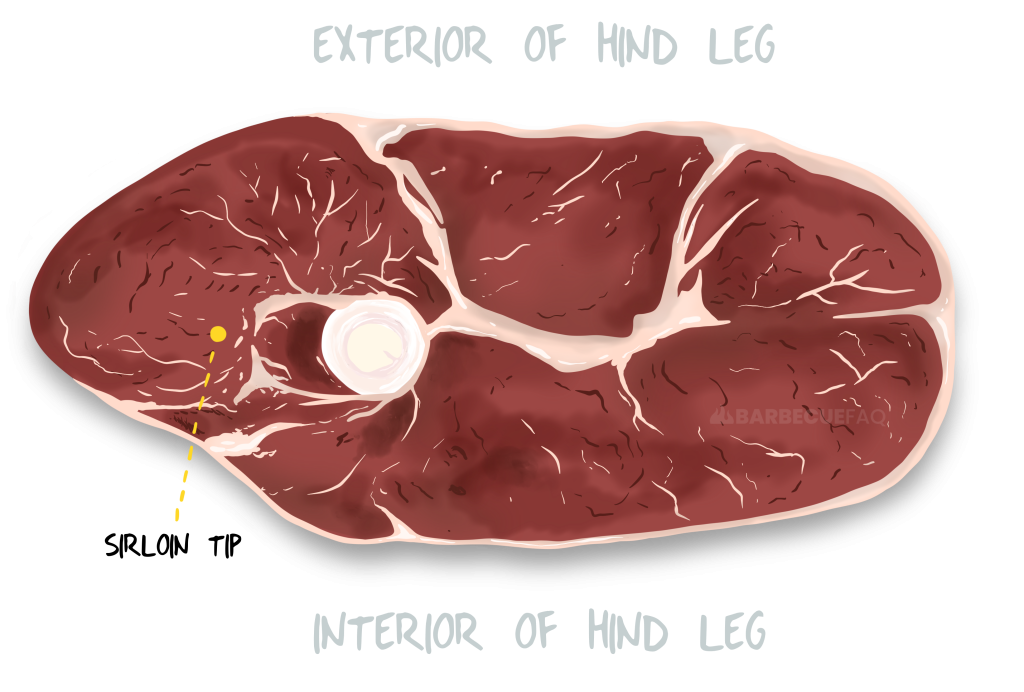
Sitting just above the knuckle – separated by a layer of seam fat – is the tri-tip.
The Heel
The heel is sort of a misnomer as it isn’t the literal heel of the cow. Rather, it’s essentially the calf muscles.
More specifically, the heel is a set of two muscles:
- the superficial digital flexor
- the gastrocnemius
These muscles sit immediately above the hind shanks or inside of the silverside (bottom round).
Often, the super digital flexor is removed and you’re left with just the gastrocnemius.
Steaks can then be cut from the center portion to create “Merlot steaks” – also called velvet steaks.
How are these Sub-primals Typically Used?
In a grocery store, most of these sub-primals are turned into roasts.
However, it’s also common to find some sold as steaks.
Eye of round
- “Minute steaks” – small/thin steaks for pan searing for 1 minute.
- Beef jerky
- As a roast – often has a fat cap left in-tact
Top Round
- Top round roast (often labeled as london broil)
- Top round steak (of the various round steaks, this is the most tender)
- As meat for beef jerky
- As meat for roast beef
Bottom Round
- Bottom round roast
- Bottom round steak (contains the eye of round)
- Cube steaks
- As meat for beef jerky
- Dry and/or pot roasted
- Rump roast
Sirloin Tip
- Sirloin tip roast
- Sirloin tip steak
- As meat for beef jerky
- Cubed into meat for pot roast
Heel*
- Merlot steaks
*Not common where I’m from; To the point that I’ve never seen “heel meat” sold.
Also worth noting: The upper leg bone (the femur) is typically extracted from these muscles and is cross cut. In my grocery store they’re packaged as “sliced marrow bones.”


